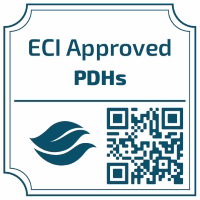Back
Claim Credit Verification Code: 2032
One (1) Hour Case Study
Erosion and Sediment Control
Del-Mar-Va-lous Water Quality Results on Construction Projects in the Mid-Atlantic Region
Thursday, February 27, 2025
1:30 PM – 2:30 PM ET
Location: E10C
CE: 1 PDH
Level of Presentation: Intermediate

Brian M. Free, CPESC, CPSWQ, QSD, CPAg
Director of Business Development
Applied Polymer Systems
Greensboro, North Carolina, United States
Presenter(s)
Competing interests are often at odds when it comes to developing our natural environment for human uses. Whether it be a landfill, oil and gas pipeline, housing development or transportation project, all these land use developments can be conducted in ways that limit the impact to the natural environment and protect land and water resources. Join us as we discuss how three projects in the Mid-Atlantic region addressed the need to develop infrastructure while protecting land and water quality on and off their project sites. Project case studies from Delaware, Maryland, and Virginia, will be presented. This region of the Mid-Atlantic is often referred to as DelMarVa by locals, hence the name in the title. Each project reviewed will have clearly defined problems, solutions, and resolutions to highlight the before, during, and after statuses of these projects.
Full Abstract: Any time soil is disturbed there is the potential for accelerating erosion and discharging sediment into receiving waters. It is our responsibility to minimize the man-made erosion potential and protect land and water resources as we develop infrastructure projects. There are a multitude of Best Management Practices (BMPs) used for erosion prevention and sediment control, however, even with these BMPs we still experience soil loss and have sediment entrained with stormwater on our construction sites. What options do we have when regulatory compliance mandates that only clean, clear water may be discharged from the sites we are managing?
Three recent construction projects across a region of the Mid-Atlantic United States that locals refer to as Delmarva (Delaware, Maryland, and Virginia) highlight viable and innovative solutions to common erosion and water quality challenges. All three of these projects had experienced regulatory non-compliance issues, were very visible projects facing strong community opposition, and all were struggling to meet turbidity discharge limits. While the projects were very different in nature, the polymer-enhanced erosion BMPs and flocculant solutions employed to solve their water quality challenges were very similar. First, someone involved in the project recognized that they needed to reach out to subject matter experts to assist in identifying a solution to their problem. Second, a consultation was arranged to learn more about the specific challenges faced on each project. Third, training was conducted to educate the project stakeholders on how to rectify the specific challenges faced on each project. Fourth, site visits were conducted, soil and water samples were analyzed, and site-specific recommendations were made to enhance BMPs with polyacrylamide (PAM) and create passive flocculant treatment zones to reduce turbidity in their construction stormwater. Fifth, site-specific remedies were applied, and field tweaking was necessary to ultimately achieve the desired outcomes.
Competing interests are often at odds when it comes to developing our natural environment for human uses. Whether it be a housing development, landfill, energy, or transportation project, all these land use developments can be conducted in ways that limit the impact to the natural environment and protect land and water resources. Join us as we discuss how three projects in the Mid-Atlantic region utilized polymer enhanced BMPs to control erosion and reduce turbidity in their construction stormwater to preserve land and water quality on and off their project sites.
Full Abstract: Any time soil is disturbed there is the potential for accelerating erosion and discharging sediment into receiving waters. It is our responsibility to minimize the man-made erosion potential and protect land and water resources as we develop infrastructure projects. There are a multitude of Best Management Practices (BMPs) used for erosion prevention and sediment control, however, even with these BMPs we still experience soil loss and have sediment entrained with stormwater on our construction sites. What options do we have when regulatory compliance mandates that only clean, clear water may be discharged from the sites we are managing?
Three recent construction projects across a region of the Mid-Atlantic United States that locals refer to as Delmarva (Delaware, Maryland, and Virginia) highlight viable and innovative solutions to common erosion and water quality challenges. All three of these projects had experienced regulatory non-compliance issues, were very visible projects facing strong community opposition, and all were struggling to meet turbidity discharge limits. While the projects were very different in nature, the polymer-enhanced erosion BMPs and flocculant solutions employed to solve their water quality challenges were very similar. First, someone involved in the project recognized that they needed to reach out to subject matter experts to assist in identifying a solution to their problem. Second, a consultation was arranged to learn more about the specific challenges faced on each project. Third, training was conducted to educate the project stakeholders on how to rectify the specific challenges faced on each project. Fourth, site visits were conducted, soil and water samples were analyzed, and site-specific recommendations were made to enhance BMPs with polyacrylamide (PAM) and create passive flocculant treatment zones to reduce turbidity in their construction stormwater. Fifth, site-specific remedies were applied, and field tweaking was necessary to ultimately achieve the desired outcomes.
Competing interests are often at odds when it comes to developing our natural environment for human uses. Whether it be a housing development, landfill, energy, or transportation project, all these land use developments can be conducted in ways that limit the impact to the natural environment and protect land and water resources. Join us as we discuss how three projects in the Mid-Atlantic region utilized polymer enhanced BMPs to control erosion and reduce turbidity in their construction stormwater to preserve land and water quality on and off their project sites.
Learning Objectives:
At the conclusion of this presentation, attendees will:
- define what flocculation is and how it helps meet sediment loss requirements to improve construction stormwater quality.
- list components necessary to create effective passive treatment applications.
- identify opportunities to reach out to subject matter experts for assistance in meeting regulatory compliance on construction projects.

.jpg)


